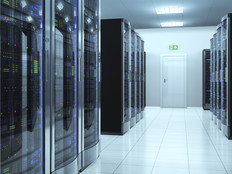Monterey County Exploring the Benefits of SD-WANs
Monterey County, Calif., looks to software-defined wide area networks (SD-WANs) for two main reasons: to improve network performance and reduce the number of site visits its technicians need to make.
SD-WANs replace traditional command line interface configurations with centralized control and orchestration. Because IT managers gain control and visibility into the network, they can manage it centrally without having to make site visits.
Alex Zheng, division manager for county infrastructure, says the county spans such a wide geographic area that it often takes two to three hours for a network technician to make a call.
“We’re just a staff of five, and we are supporting 100 sites across 27 county departments, 15 police agencies and nearly 4,500 users,” Zheng says. “We just need a way to provide quick service turnaround to our users.”
Zheng says SD-WANs promise to let his department make updates and add new WAN connections remotely through software, reducing travel time and improving performance in the process.
The percentage of enterprises that will use software-defined wide area networks in all of their branches by the end of 2019, up from less than 1%today
SOURCE: Gartner, “Market Guide for Software-Defined WAN,” December 2015
Multiple Paths Available
State and local governments have many paths to improve WAN performance with software-defined WANs. Some opt to deploy SD-WANs virtually. Others select an established manufacturer that incorporates the intelligence into existing routers and firewalls, while still others pick low-cost branch office applications provided by startup vendors.
The decision isn’t final, but Zheng indicates that he’d like to leverage Monterey County’s existing Cisco Systems network infrastructure. “We’re definitely looking into SD-WANs for 2016,” he says. “We’re a Cisco shop, so any option that lets us maintain our familiar networking setup will be strongly considered.”
Andrew Lerner, a research director who covers networking infrastructure for Gartner, says that while SD-WANs aren’t necessarily new, they bundle existing technologies in a way that improves WAN performance. “We’re seeing that SD-WANs really make economic sense for a lot of organizations,” he says. “I think with the software-defined networking trend, we’re going to see a lot more adoption on the WAN side than we had anticipated.”
Exploring the Benefits of SD-WAN
Dan Conde, an analyst who covers enterprise network technologies for the Enterprise Strategy Group, says SD-WANs provide savings through the following reductions:
- Network connections: As companies move to the cloud and Internet-based technologies, it doesn’t make sense to link costly MPLS lines to data centers. Reducing the number of lines and moving to less expensive Internet connections saves money.
- Branch hardware: Virtual deployments eliminate the need for new hardware such as firewalls and virtual private networks in branches.
- Site visits: All SD-WAN technologies are developed for remote management, which requires far fewer site visits by IT staff.
- Data center equipment: Some SD-WAN services can also be hosted in the cloud, so organizations don’t need as much on-premises equipment in data centers.
“We’re seeing that SD-WANs really make economic sense for a lot of organizations,” Conde says.









